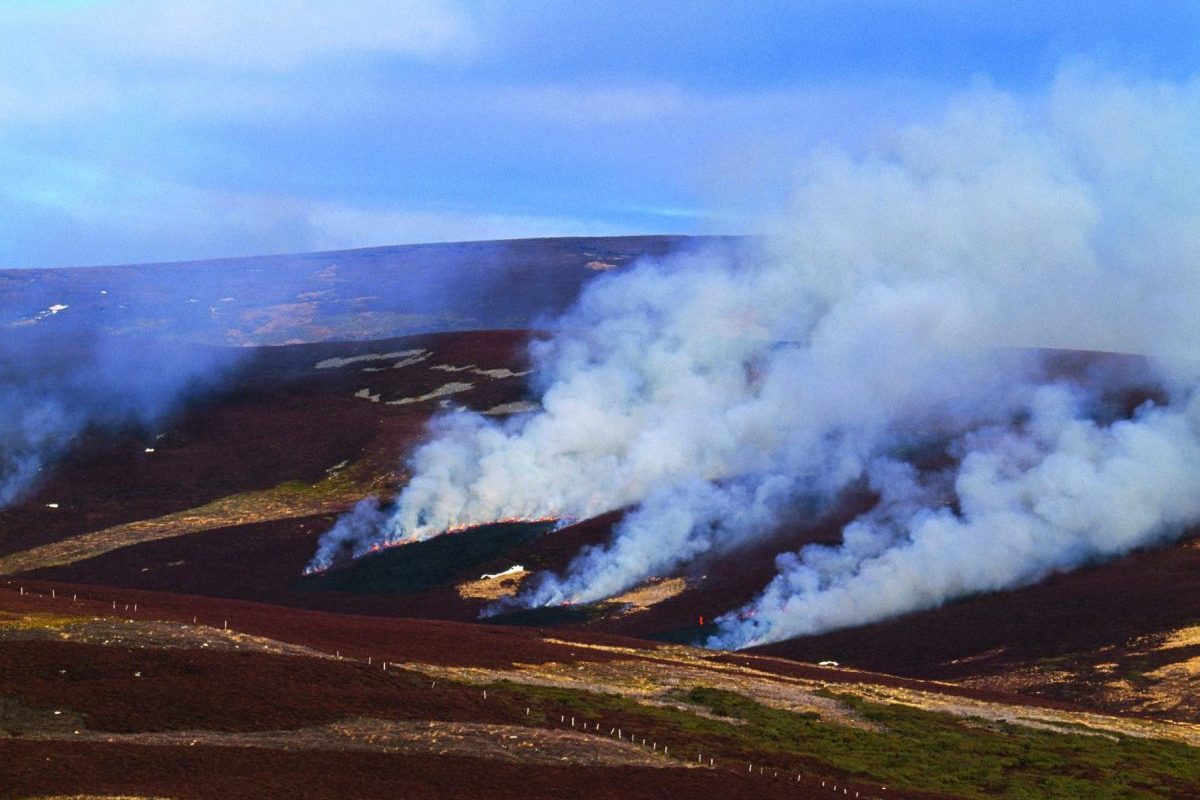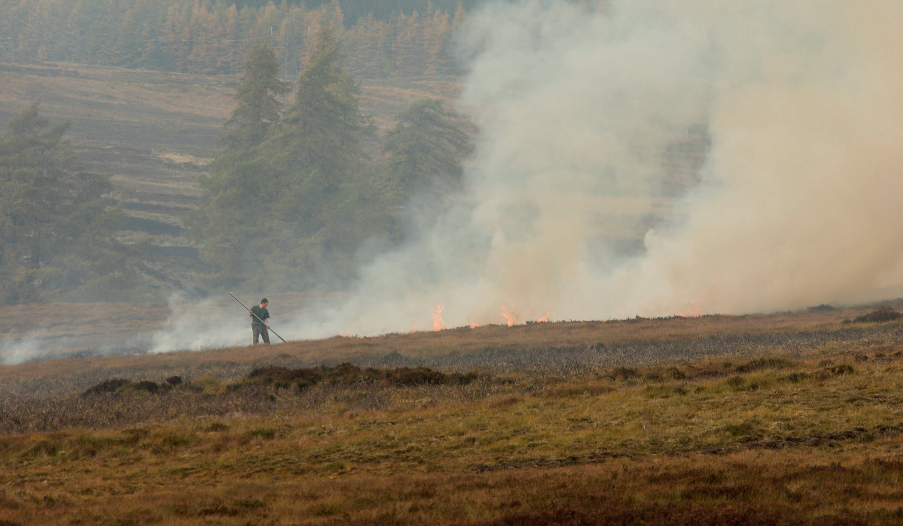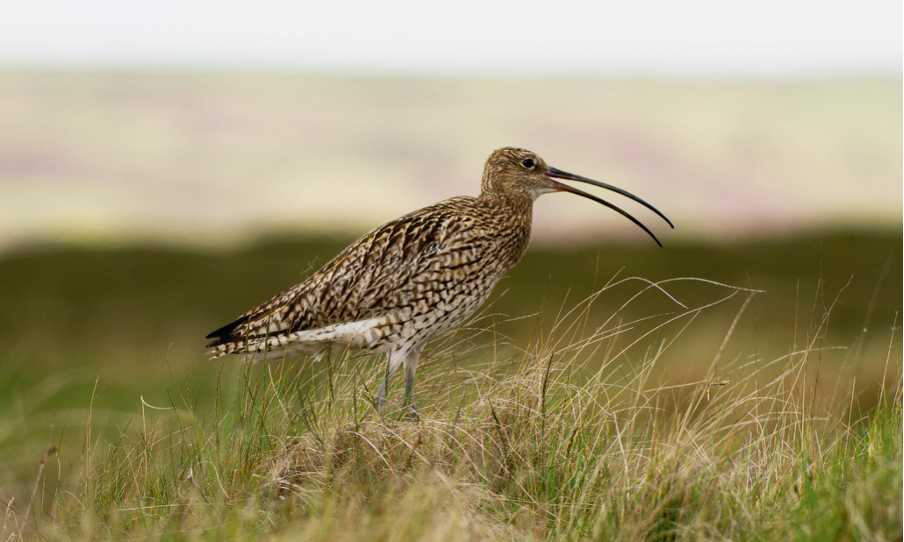News
Heather burning – how changing weather means a different approach
Would you like to appear on our site? We offer sponsored articles and advertising to put you in front of our readers. Find out more.
It’s been a cold, confusing spring in Galloway. When I was growing up, it was normal for a chilly, dry wind to come out of the east at the end of March and the start of April. We looked forward to those conditions because they allowed us to burn heather on many of the wetter parts of our hill. These fires were often lit to improve the grazing for sheep, but there’s no doubt that grouse and waders saw the benefit too.
Here in the wet west of the country, we only have limited options to light a fire on the hill. When I speak to gamekeepers in drier parts of the country, I envy the options they have to cover ground. They can burn into the autumn, and there are always days in February when a fire becomes possible.
On my ground, it’s hopeless to think of burning in the autumn when the vegetation lies soggy and sappy for weeks at a time. You can do more harm than good by trying to burn in those conditions, and our only hope comes when the wind swings around to the east in spring. That’s when we work with feverish enthusiasm to cover the ground and make an impact, before the wind changes and the rains return.
Forestry
In recent years, it seems like we still get that same wind at the end of March, but it frequently endures all the way through April and into May. However, we’re less likely to burn these days, on account of neighbouring land that has been planted with forestry. It would be a disaster if our fires got into the new trees, and we’re very cautious about how and when we burn. Plus, in this new pattern of weather, the vegetation soon becomes too dry to burn. Because of this, the flames will roar uncontrollably, and given that much of our hill is dominated by a highly combustible mix of grass and heather, the risk of a fire getting away from us is too high.
I envy keepers who run fires through short, springy swards of boot-high heather. It’s not easy, but it’s a great deal more predictable than a grass fire, where the flames can jump and sizzle like monsters.
We had a fire that escaped a few years ago into a bank of bracken. That was not ideal, but I was surprised by how the fire itself seemed to change as it consumed the fallen bracken litter. It became hot and searing, and after many years of burning heather without incident, I burned myself for the first time ever.
I can’t explain why the fire felt different when it hit the bracken, but it’s definitely not an experience I’d like to repeat. Afterwards, the bracken rebounded in greater strength than before, and that’s another reason why we’re less enthusiastic about burning than we used to be.
The prolonged cold has other downsides. A steady east wind seems to leach all moisture out of the soil itself. The ground becomes hard as iron, and that’s a problem for waders on the hill. When the weather stays dry for too long, snipe and curlew cannot forage. Snipe abandon their territories and curlew suspend breeding attempts; this has become a pattern over the past 10 years.
Snipe are generally fairly robust, but our curlew have sadly been gradually fading away since 2010. I can trap crows, catch foxes and manage breeding habitats all I like, but if the birds are driven off by excessively dry weather that lasts all the way through April into May, the work is for nothing. If this is the new normal for springtime weather, I need to adjust my approach and adapt accordingly.
Related articles
News
Hit pause on flawed rollout, urges BASC
BASC calls for delay to the Scottish government’s muirburn licensing scheme amid concerns from practitioners over the code’s workability.
By Time Well Spent
News
More power to police for tackling poachers
Following countryside organisations’ campaigning, penalties for illegal coursing have increased, with average fines up from £360 to £6,000
By Time Well Spent
Manage Consent
To provide the best experiences, we use technologies like cookies to store and/or access device information. Consenting to these technologies will allow us to process data such as browsing behavior or unique IDs on this site. Not consenting or withdrawing consent, may adversely affect certain features and functions.
Functional Always active
The technical storage or access is strictly necessary for the legitimate purpose of enabling the use of a specific service explicitly requested by the subscriber or user, or for the sole purpose of carrying out the transmission of a communication over an electronic communications network.
Preferences
The technical storage or access is necessary for the legitimate purpose of storing preferences that are not requested by the subscriber or user.
Statistics
The technical storage or access that is used exclusively for statistical purposes.
The technical storage or access that is used exclusively for anonymous statistical purposes. Without a subpoena, voluntary compliance on the part of your Internet Service Provider, or additional records from a third party, information stored or retrieved for this purpose alone cannot usually be used to identify you.
Marketing
The technical storage or access is required to create user profiles to send advertising, or to track the user on a website or across several websites for similar marketing purposes.



